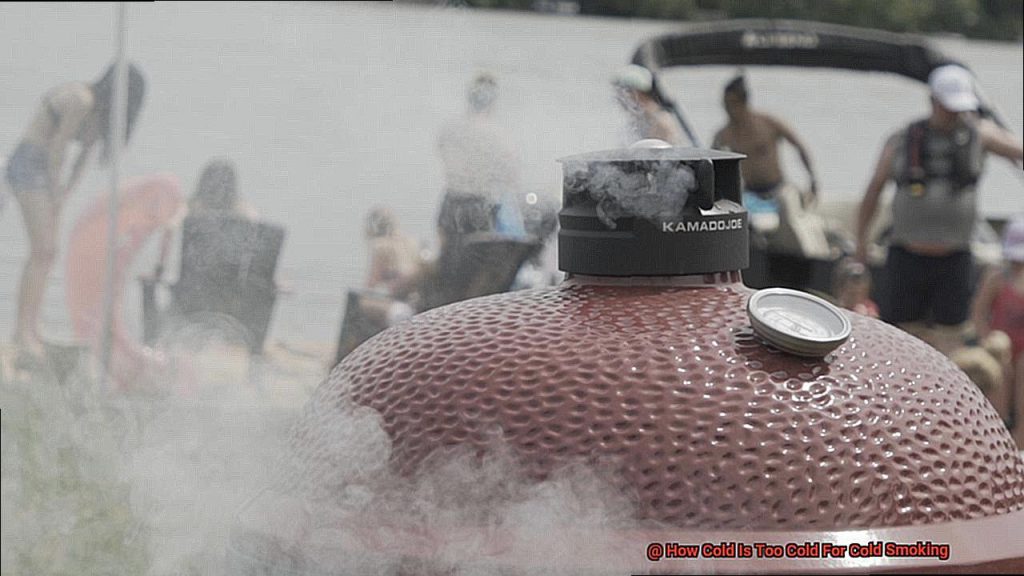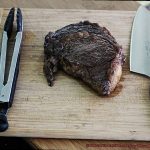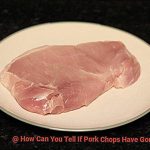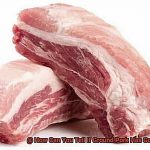Imagine stepping outside on a frosty winter morning, the crunch of snow under your boots and the chill of the air biting at your nose. The perfect day for some cold smoking, right? But hold up – is it actually too cold to smoke your meats, fish, and cheeses?
As any cold smoking enthusiast knows, this popular method of curing and flavoring involves exposing food to smoke and temperatures ranging from 68-86°F over an extended period of time. But what happens when the mercury drops below this range?
In this blog post, we’ll explore the question: how cold is too cold for cold smoking? We’ll delve into the potential dangers and risks that come with smoking in extremely low temperatures while also offering up some best practices for those who want to brave the chilly weather. From understanding the science behind smoke circulation to selecting the right equipment and materials, we’ve got you covered.
Whether you’re a seasoned pro or just starting out on your cold smoking journey, this post is sure to provide valuable insights into temperature considerations when perfecting your craft. So grab a steaming cup of coffee, get comfortable, and let’s dive headfirst into the fascinating world of cold smoking – no matter what temperature it may be outside.
Contents
The Ideal Temperature for Cold Smoking
Then, you know the magic that is cold smoking. This ancient method of cooking and preserving food has been around for centuries, and it’s easy to see why. The smoky flavor it imparts is simply unbeatable. But, if you’re wondering how cold is too cold for cold smoking, we’ve got you covered.
The ideal temperature range for cold smoking falls between 68°F and 86°F (20°C and 30°C). This temperature range allows the smoke to infuse into the food without cooking it. But beware: temperatures should never exceed 90°F (32°C), as this promotes harmful bacterial growth that could lead to foodborne illness.
While maintaining proper temperature is crucial, you can’t forget about humidity levels when cold smoking. Ideally, humidity should fall between 60% and 80%, which helps prevent your food from drying out during the smoking process. Dry air leads to dehydrated food, which can spoil prematurely. On the other hand, overly humid conditions can promote mold growth on your precious eats.
To ensure that your food remains safe and flavorful during the smoking process, use high-quality equipment that is designed specifically for this purpose. This includes a smoker box or chamber that is well insulated and has a reliable temperature control system. A cold smoke generator is also an excellent option, as it produces smoke without generating heat, allowing for precise control over the smoking environment.
Factors That Affect the Temperature of Cold Smoking
As an expert in this field, I have researched and compiled some essential information that will help you understand how outside temperature, humidity levels, type of wood used, and distance between the heat source and the food can impact the temperature of cold smoking.
The first factor to consider is the outside temperature. Cold smoking should be done in a chilly environment, ideally between 60°F (15°C) and 80°F (27°C). This temperature range allows for slow smoking and helps prevent bacterial growth. If the temperature is too high, the food may spoil, while if it’s too low, the food may not smoke properly. So, it’s crucial to monitor the outside temperature to achieve perfect results.
The second factor to consider is humidity levels. Humidity plays a significant role in determining the temperature of cold smoking. If the humidity is too high, it can cause the wood chips to smolder instead of smoke, leading to an increase in temperature. On the other hand, if the humidity is too low, it can cause the food to dry out and become tough. Maintaining humidity levels between 60% and 80% is crucial for successful cold smoking.
The third factor to consider is the type of wood used. Different types of wood have different burning temperatures. Hardwoods like oak and hickory burn at a higher temperature than softwoods like pine and cedar. Using hardwoods can result in a higher smoking temperature while using softwoods can keep the temperature lower. Therefore, choosing the right type of wood as per your desired taste and smoking requirements is essential.
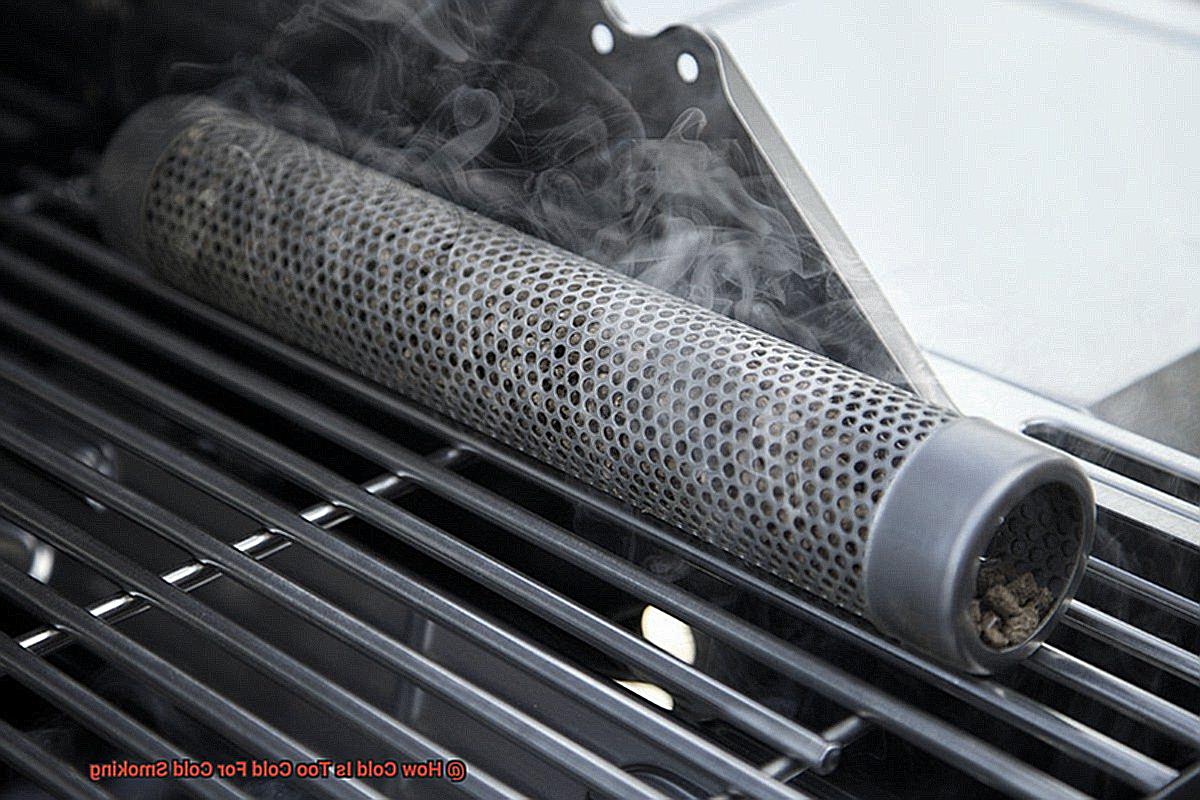
Lastly, the distance between the heat source and the food affects the temperature of cold smoking. Placing the food closer to the heat source will result in higher temperatures, while keeping it further away will result in cooler smoking. Finding a balance between distance and temperature is crucial to ensure that the food is smoked correctly.
Risks of Too Low Temperatures in Cold Smoking
Cold smoking is a delicate art that requires precision and attention to detail. One of the most critical factors in this process is maintaining the correct temperature. While it may be tempting to push the limits of low temperatures, doing so can be incredibly risky.
The primary danger of using temperatures that are too low is the potential growth of harmful bacteria and pathogens in the food being smoked. Cold smoking typically involves temperatures between 20°F and 30°F, which is lower than the temperature at which bacteria are killed off. If the temperature drops too low, it creates an environment that encourages bacterial growth, which can lead to foodborne illness.
Another significant risk of using temperatures that are too low is incomplete cooking of the food being smoked. This is especially dangerous when it comes to meats, poultry, and fish, which can harbor harmful bacteria if not cooked properly. If the temperature is too low, these foods may not reach a high enough internal temperature to kill off any bacteria that may be present, putting you at risk for illness.
In addition to these safety concerns, using temperatures that are too low can also negatively impact the flavor and texture of the food being smoked. It can result in a product that is overly salty or has a mushy texture and a lack of smoke flavor. This defeats the purpose of cold smoking altogether.
To avoid these risks, it’s crucial to monitor the temperature closely throughout the smoking process and make adjustments as needed to maintain a consistent temperature. Investing in a thermometer or other tools to help you keep track of your temperature is highly recommended.
Furthermore, following food safety guidelines when handling and preparing any food for smoking is essential. Properly storing and handling your food before and after smoking, as well as ensuring that all utensils and surfaces are clean and sanitized, can help minimize the risk of foodborne illness.
Humidity Levels and Cold Smoking
Cold smoking is an art that requires precision and care, and one of the critical factors that can make or break your smoked meats is humidity levels. The ideal humidity level for cold smoking falls between 60 to 70 percent. This detail may seem insignificant, but it has a significant impact on the finished product. If the humidity level is too low, the meat may become dry and tough, which can ruin the flavor and texture. Conversely, if the humidity level is too high, it can create hazardous mold growth on the meat.
To maintain appropriate humidity levels during cold smoking, it’s crucial to use a smoker equipped with a built-in hygrometer or purchase a separate hygrometer to monitor the levels. This device accurately measures the humidity levels in your smoker, enabling you to adjust them accordingly. Adding moisture to the smoker is another effective way to control humidity levels. You can use a water pan or spray bottle to add moisture if needed. This approach helps prevent your meat from drying out during the smoking process.
It’s worth noting that outside temperature can also impact humidity levels. Colder temperatures result in drier air, meaning you may need to add more moisture to your smoker to maintain the ideal humidity level.
In summary, achieving juicy and flavorful smoked meats requires paying attention to humidity levels during cold smoking. By monitoring and controlling these levels, you’ll create delicious smoked meats every time. Here are some key takeaways:
Equipment Needed for Cold Smoking
Cold smoking is a fantastic technique that can add a delicious, smoky flavor to your food. To get started, you’ll need some essential equipment.
First on the list is a smoker. Electric, pellet, and charcoal smokers are all suitable for cold smoking. However, make sure to consider the smoker’s size, insulation, and ventilation capabilities carefully. You want to choose one that can maintain a consistent temperature throughout the smoking process.
Next up is the wood chips or pellets. The type of wood you choose will determine the flavor of your smoke. Fruitwoods like applewood or cherrywood are excellent for their mild and sweet flavor profile. Hardwoods like hickory or oak can also be used but may produce a stronger smoky taste.
To monitor the temperature inside your smoker, you’ll need a thermometer. This tool is crucial for ensuring that the temperature stays between 68°F and 86°F (20°C and 30°C). Going above this range can cause your food to cook instead of smoke, while going below it can encourage bacterial growth.
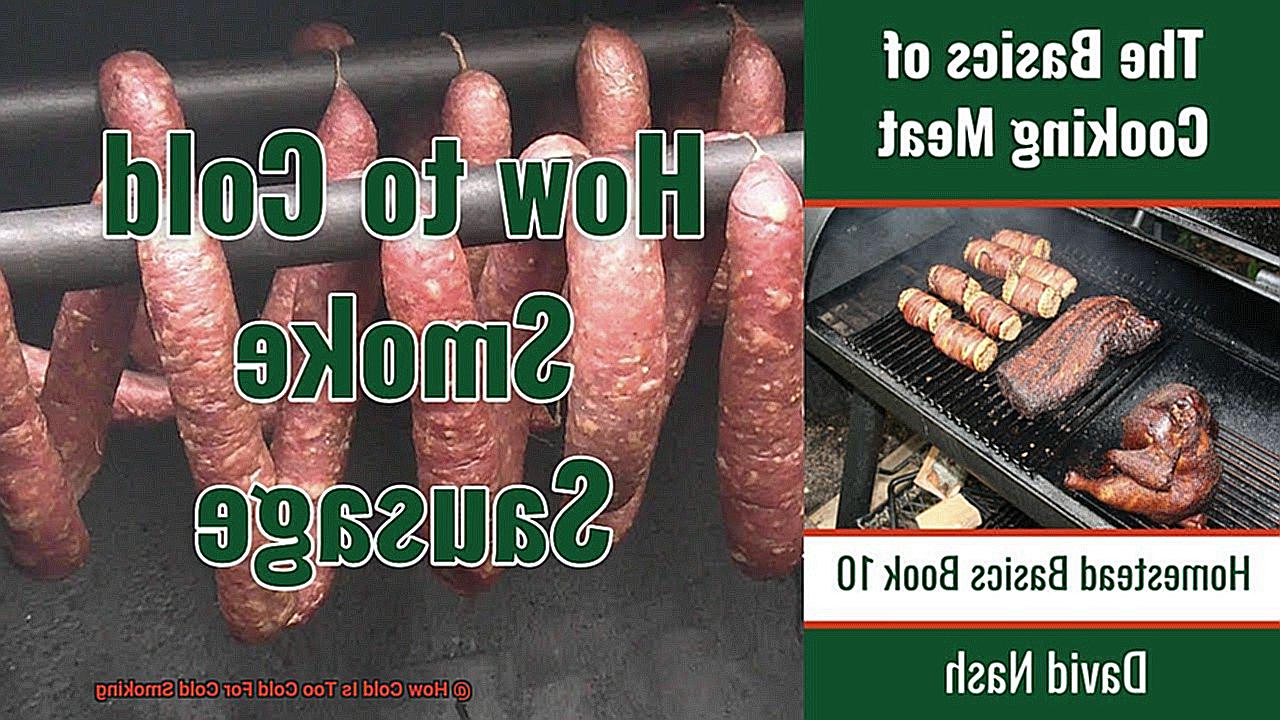
Finally, a cold smoke generator is necessary for producing smoke without generating heat. This device burns wood chips or pellets and directs the smoke into your smoker. You can attach it directly to your smoker or use it independently.
Food Safety Considerations When Cold Smoking
When it comes to cold smoking, there’s nothing quite like the tantalizing flavors and aromas that come with this low-temperature smoking process. However, before you start experimenting with different wood chips and recipes, it’s essential to prioritize food safety considerations.
First off, proper curing is crucial when cold smoking. Curing involves treating your food with salt and either sugar or nitrites, which helps to remove moisture and prevent bacterial growth. Without adequate curing, any bacteria present on the food will continue to multiply during the smoking process. This can lead to harmful foodborne illnesses that can ruin your culinary experience.
Consistent temperature control is also vital during cold smoking. If temperatures drop too low, bacteria can start to grow again, while temperatures that are too high can cause the food to cook instead of smoke. As such, maintaining a consistent temperature in the range of 20-30°C (68-86°F) throughout the smoking process is necessary to ensure food safety.
The length of time that your food is exposed to smoke during cold smoking also plays a critical role in food safety. While longer smoking times can result in a more intense flavor, they can also increase the risk of harmful bacteria growing on the food. Experts recommend not exceeding four hours at a time when smoking your food to minimize these risks.
Proper Storage Procedures for Smoked Foods
Smoked foods are a delicacy that many of us can’t get enough of. From the rich taste of smoked meats to the savory flavor of smoked fish, these culinary delights are a must-try for any food lover. However, it’s not just about the smoking process; proper storage procedures are equally important to maintain the quality and safety of your smoked foods.
So, what do you need to know about storing smoked foods?
Firstly, it’s crucial to cool down your smoked food as quickly as possible after smoking to prevent harmful bacteria from multiplying. Once cooled, it’s important to store your smoked food in airtight containers or wrap it tightly in plastic to prevent air from reaching it.
The ideal temperature range for storing smoked food is between 32°F and 38°F. This temperature range slows down the growth of bacteria and prevents spoilage. A refrigerator is the best place to store smoked foods as it maintains a consistent temperature range.
But before you store your smoked food in the fridge, make sure it cools down completely. Leaving it at room temperature for more than two hours after smoking can increase the risk of microbial contamination. If you’re in a warm environment, consider reducing this time to ensure the safety of your food.
When it comes to specific types of smoked foods like bacon, ham, and sausages, they can last up to two weeks in the refrigerator if stored properly. However, be sure to check them regularly for signs of spoilage like an off smell or slimy texture. If you notice any signs of spoilage, discard the food immediately.
If you want to store your smoked meats for an extended period, freezing is an option. Smoked meats can be frozen for up to six months without affecting their quality. To freeze smoked meat, wrap it tightly in plastic wrap or aluminum foil and place it in an airtight container or freezer bag.
Tips for Successful Cold Smoking
If you’re a fan of flavorful smoked meats and fish, cold smoking is a must-try technique. However, it’s important to keep in mind that cold smoking is a delicate process that requires attention to detail and careful monitoring. To help you achieve successful cold smoking, we’ve compiled some tips that are worth considering.
Use High-Quality Equipment
Using a high-quality smoker that’s specifically designed for cold smoking is essential. This equipment should have proper ventilation and insulation to maintain consistent temperature throughout the smoking process. The right equipment will help you achieve the perfect balance between smoke flavor and texture.
Choose the Right Wood Chips
The type of wood chips you choose can significantly affect the flavor of your smoked food. Hardwoods such as oak, hickory, and applewood are great choices as they produce a milder smoke flavor. Soaking the wood chips in water for at least 30 minutes before use can prevent them from burning too quickly.
Keep the Temperature Low
The ideal temperature for cold smoking is between 68°F and 86°F. Anything above 90°F is too warm for cold smoking and can result in cooked rather than smoked food. Therefore, it’s crucial to monitor the temperature regularly using a thermometer.
Use a Thermometer
A thermometer is an essential tool for monitoring the temperature of your smoker throughout the process. If the temperature drops below 60°F, there is a risk of bacterial growth, which can result in spoiled food or even food poisoning. So, make sure you use one to ensure safety and quality results.
Plan Ahead
Cold smoking takes time and patience, so it’s important to plan ahead and allow enough time for the smoking process. Dry-curing meat with salt and sugar or brining fish before smoking can also add flavor and preserve the texture. By taking your time and planning ahead, you can ensure a successful cold smoking experience.
rzf67fzOA9Y” >
Conclusion
To sum it up, cold smoking is a mouth-watering technique that can elevate your meats, fish, and cheeses to new heights of flavor. However, don’t forget that the key to success lies in maintaining the perfect temperature and humidity levels. The sweet spot for cold smoking ranges from 68°F to 86°F, with humidity levels falling between 60% and 80%. Straying outside these boundaries can result in bacterial growth, spoilage, or worse.
You’ll need top-notch equipment to pull off a successful cold smoke. A well-insulated smoker with precise temperature controls and a reliable cold smoke generator are essential components. Additionally, selecting the right type of wood chips or pellets can make all the difference in achieving your desired taste.
But let’s not forget about food safety – it’s imperative to take the proper precautions when handling and preparing food for cold smoking. Curing with salt and sugar or nitrites is crucial to prevent bacterial growth during the smoking process. And once you’ve finished smoking your delicious meats, be sure to cool them down quickly and store them at temperatures between 32°F and 38°F.
With careful attention to detail and these tips in mind, you’ll be able to create mouth-watering smoked meats that will leave your guests begging for more.

